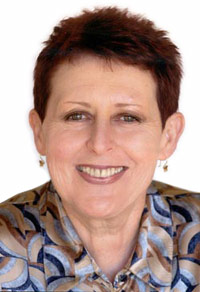As well as being Aussie Author Month this month, it is also National Poetry Month. Today I have a guest post from poet and children’s writer Rena Traxel on how writing poetry can help you be a better writer. She has some great tips, particularly for picture book writers.
 Writing Poetry Can Help You Be a Better Writer
Writing Poetry Can Help You Be a Better Writer
When you were in school you most likely studied poetry. When you grew up some of you left poetry writing behind. In celebration of National Poetry Month, I created a poetry challenge, in which I’ve pushed the participants to try a new poetic form each day, except for Sundays, in the month of April. I’ve had them write both silly and serious poems. What is the purpose of the challenge? To help the participants grow as writers. I’m here today to discuss how poetry writing can help you.
- To grow as a writer you must challenge yourself. Writing poetry is different from writing prose and therefore will force you to stretch your mind. If you already write poetry try out a poetic form you have never used before (this can be as simple as including a simile in your poem).
- Is your story not flowing? Turn to poetry. Poets pay attention to stresses and syllables that is why poems tend to flow. Dr. Seuss wrote many of his books using trisyllabic meter (putting stress on every third syllable). Dr. Seuss’ books move seamlessly from page to page. His books are easy to remember and kids love his books.
- Poetry can help you get in touch with your inner child. Literary critic and theorist Northrop Frye said, “the speech of a child is full of chanting and singing and it is clear that the child understands what many adults do not, that verse is more direct and primitive way of conventionalizing speech then prose is.” There is a reason why children love Dr. Suess and Mother Goose.
- Are you too wordy? Poems show an entire story in very few words. Poets practice the art of compression by paying attention to every single word to make sure it is absolutely necessary. Even the title contributes to the story.
- Poets pay attention to line breaks. They use line breaks to slow down or speed up a poem. If you write picture books it’s essential to know where to break up a story so that it flows from page to page. Even if you write novels it’s important to know where to cut a chapter.
- Practice showing versus telling. Because poems tend to be short they rely on images to tell a story.
- Poetry can help you express yourself. You might be surprised to learn that poetry is closer to how we speak then prose.
- Poetry is meant to read out loud and is why poets spend a considerable amount of time thinking about word choice. If you write picture books then you know your stories will have to be read out loud. Even if you write novels you will have to read sections out loud at a reading. Get comfortable with hearing your words by writing poetry.
- Poetry is fun. Poems are not bound by the same rules as prose. You can play around with form and punctuation as along as your choices are consistent.
Every time you sit down to write you are practicing your craft. How do you expect to get better if you don’t push yourself? Step out of your comfort zone and give poetry a try. You will be amazed at the new skills you will learn.
Rena J. Traxel writes stories and poems for kids. She is currently working on a fantasy series for tweens. To learn more about her check out her website at www.renajtraxel.com or head over to blog “On the Way to Somewhere” at www.renajtraxelblog.com and enjoy some of her poems and stories.
A note from Jo:
Looking for some rhyming picture book inspiration during Aussie Author Month? I always refer to the two masters of rhyming picture books, Australian authors Graeme Base (Enigma, The Eleventh Hour, The Worst Band in the Universe) and Mem Fox (The Ballad of Skip and Nell, Time for Bed, Where is the Green Sheep?). For poetry, check out some of the works of Banjo Patterson (my favourite is Mulga Bill’s Bicycle).








